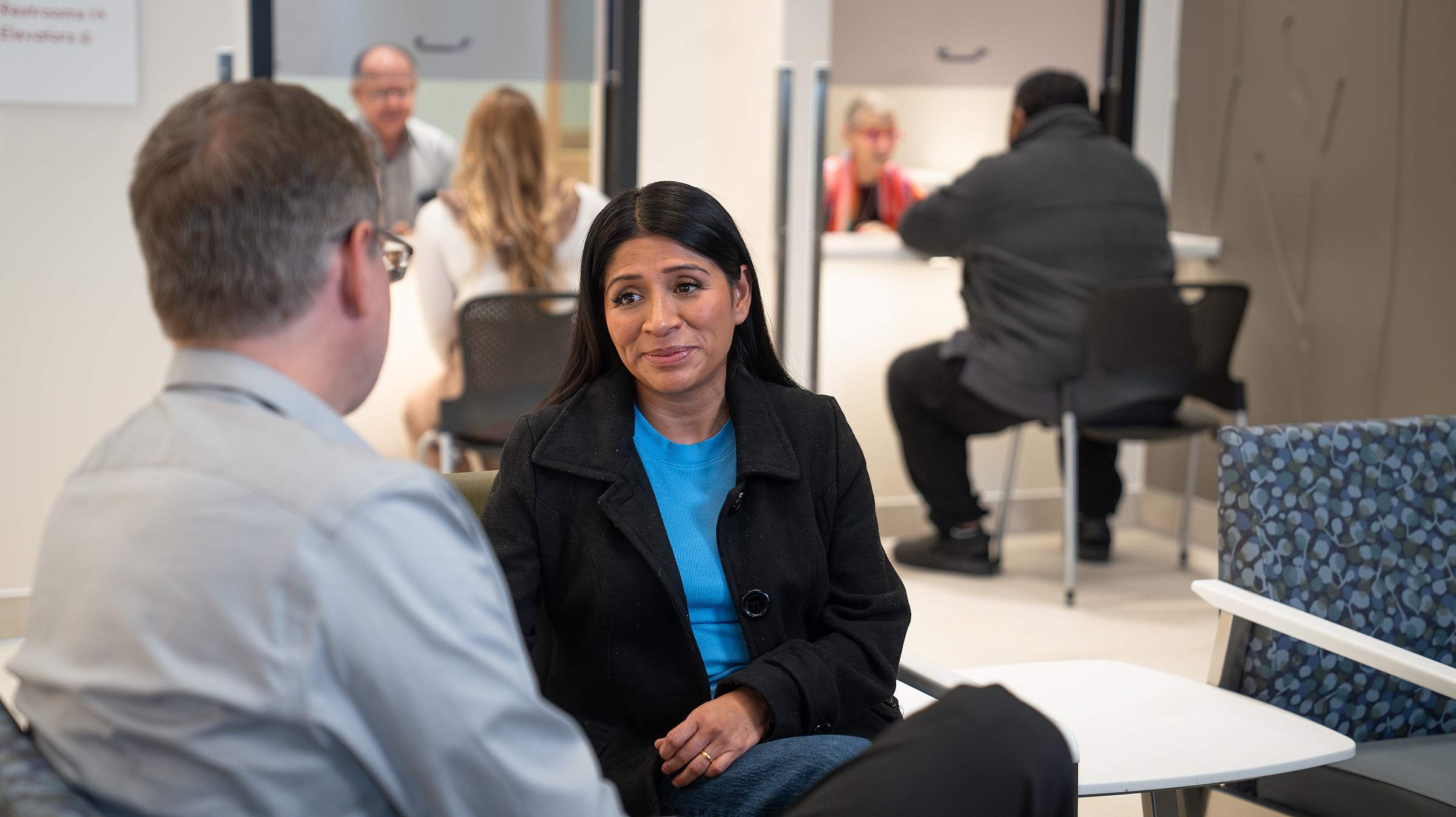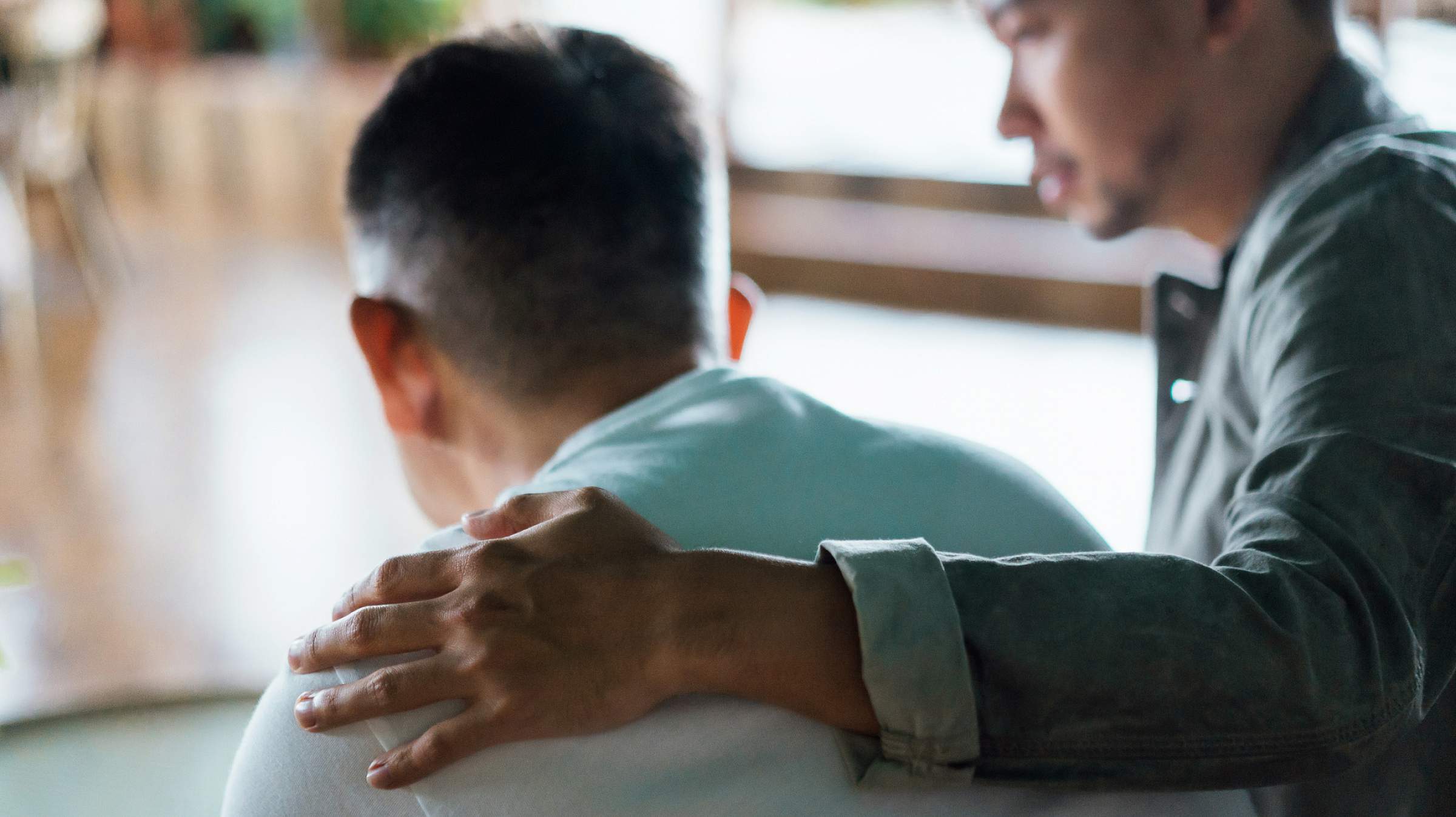
Processing Trauma: How to Cope and Steps Toward Healing

Processing Trauma: How to Cope and Steps Toward Healing
Trauma can look different for everyone. It can arise after being in an accident, losing a loved one, experiencing natural disasters, witnessing something traumatic happen to someone else, and many other situations. Traumatic events can have both physical and emotional effects on a person, and complicated emotions such as anger, grief, and fear can feel overwhelming.
Eric Monson, MD, PhD, a child and adolescent psychiatrist at Huntsman Mental Health Institute at the University of Utah, provides advice on ways someone can process a traumatic event and when they should seek professional help.
Knowing What’s Normal
Everyone handles trauma differently and has varying levels of stress tolerance, but experiencing some common physical and emotional responses is normal after a traumatic event.
Common Physical Responses
- Muscle tension or tightness
- Fatigue
- Difficulty sleeping or having nightmares
- Increased heart rate
- Changes in appetite
- Stomachaches or headaches
- Sweating
Common Emotional Responses
- Feeling numb or detached
- Fear, anxiety, or feeling “on edge”
- Anger or becoming easily agitated
- Hopelessness and sadness
- Guilt
- Difficulty concentrating
- Avoiding people or places that remind you of the event
- Intrusive thoughts or thinking about the event frequently
Monson says it’s normal for these symptoms to last a few days or up to one or two weeks. Most people will experience more severe symptoms right after the event, but they will gradually get better over time.
Navigating the Healing Process
Recovering after a traumatic event isn’t a quick process, nor is it linear.
“Trauma is something that challenges our sense of safety, and makes us feel like something is happening that could put us in danger,” Monson explains. “One of the first things anybody who’s had a traumatic experience needs to do is take steps to restore a feeling of safety, and that starts with physical safety. That involves removing yourself from that dangerous environment if you can.”
Once you are in a safe space, you can try the following to make yourself feel calm:
- Practice calming activities, such as mindful breathing
- Engage your support system, like family members or friends
- Return to normal activities when you are able
“A lot of our feelings of safety come from routine and our daily life, so anything we can do to restore that can be very helpful,” Monson says.
Seeking Professional Support
Monson says it’s never too early to reach out for help after a traumatic event. However, if you are unable to function in your day-to-day life, or you notice that your symptoms are worsening or not going away over time, those are good indicators that it’s time to reach out to a mental health professional to potentially address more serious conditions such as post-traumatic stress disorder (PTSD).
The following resources can be helpful for people needing professional support:
- 988 Suicide and Crisis Lifeline: A free and confidential support line available to call or text 24/7.
- SafeUT app: A free and confidential service where counselors are available to talk 24/7.
- Talk to a licensed mental health professional. Your primary care provider can help you with referrals if you’re not sure how to find a therapist.
- Join a support group for people who have experienced trauma.
- Seek out a crisis care center. The Kem and Carolyn Gardner Mental Health Crisis Care Center is open for adult walk-ins 24/7.
“Trauma is so much more than just an emotional experience,” Monson says. “It takes a lot of courage and strength to seek out help, and it’s really critical to do so if your symptoms are getting in the way of your ability to do things every day.”
No matter what kind of trauma you experienced, there are many support systems that can help you cope so you don’t have to navigate your healing journey alone.
Where to Go When You Need Mental Health Help Right Away
A mental health crisis does not always require a hospital bed, but it does require compassion and professional support. Learn how the Kem and Carolyn Gardner Mental Health Crisis Care Center offers immediate help—no appointment or referral needed.
Utah's New Mental Health Crisis Center Offers Immediate Support for Adults in Distress
You do not need to be suicidal or in psychosis to be in crisis. A mental health crisis can mean overwhelming anxiety, grief that would not lift, or a stretch of time when functioning feels impossible. Designed to be an alternative to ER visits or jail, the new Huntsman Mental Health Institute facility is open to any adult in need, no appointment required.
Emergency Mental Health Care Without Going to the ER: How Utah’s MCOT Comes to You
Crises do not wait for appointments—and neither does the Mobile Crisis Outreach Team. Learn how this no-cost, judgment-free service is helping Utahns avoid unnecessary ER visits and navigate moments of crisis with real-time, compassionate care.








